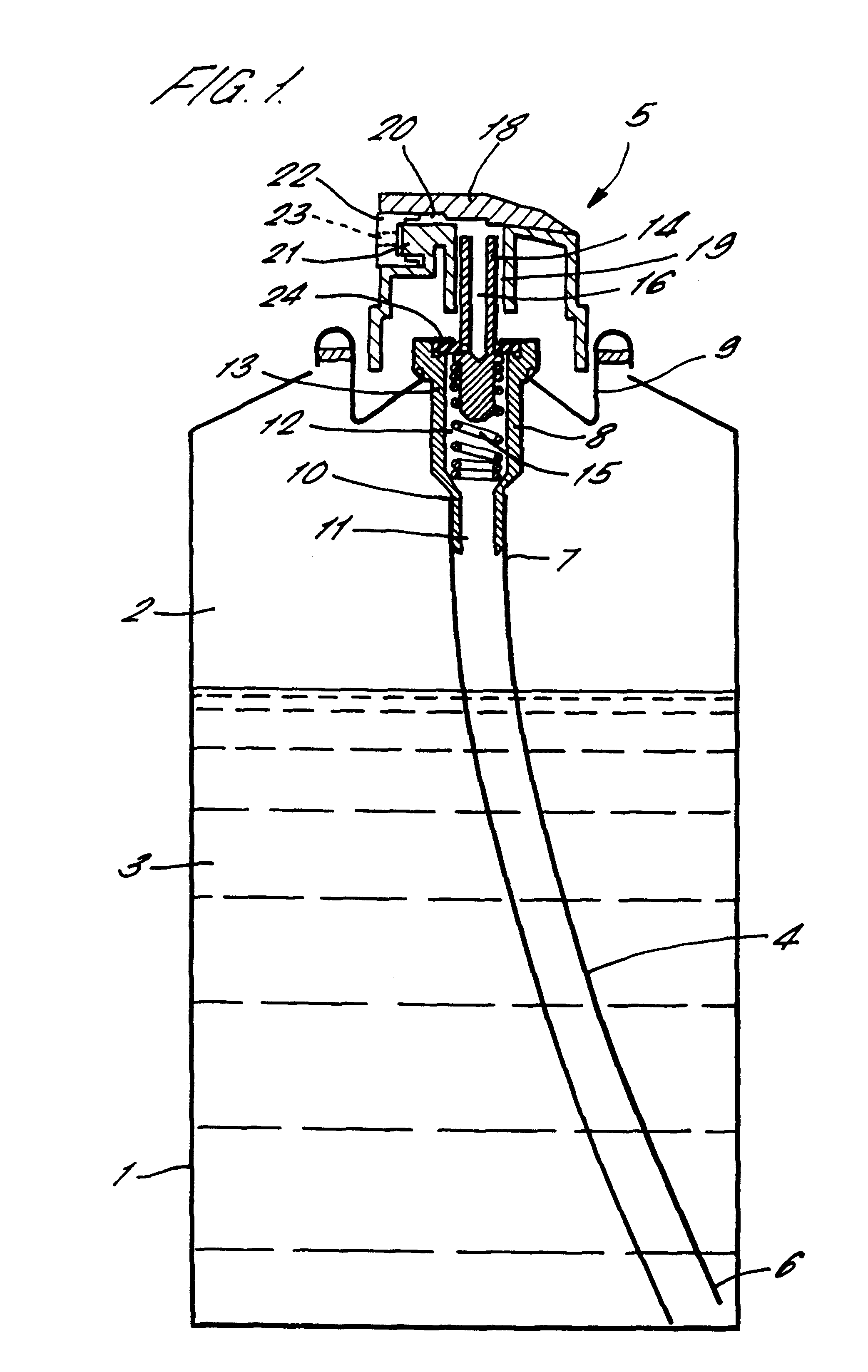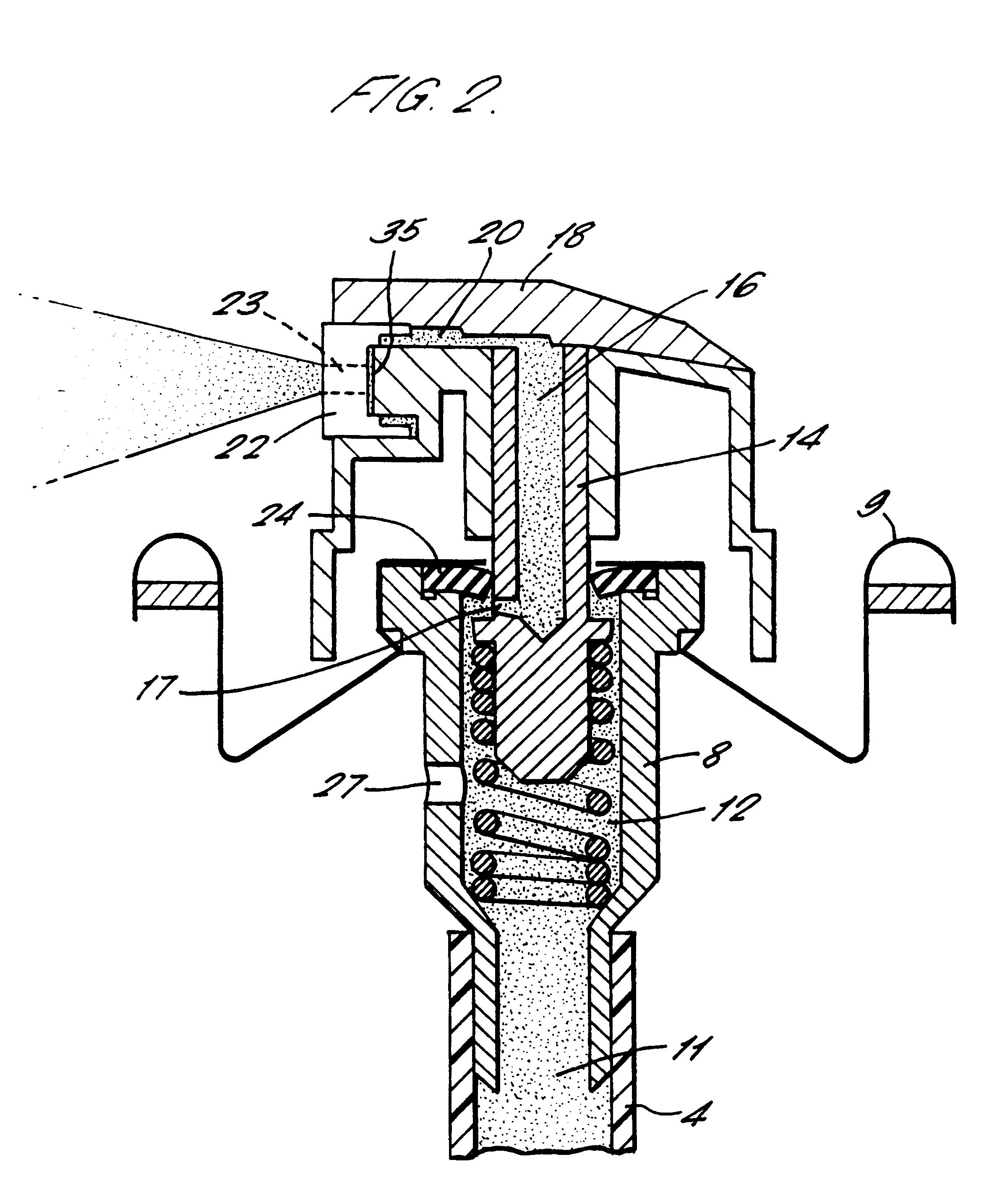Targeting of flying insects with insecticides and apparatus for charging liquids
a technology for insecticides and flying insects, applied in the direction of insect catchers and killers, liquid dispensing, combustion processes, etc., can solve the problems of high probability of contact between insects and droplets, and push droplets away, and achieve the effect of reducing the flow rate of liquid
- Summary
- Abstract
- Description
- Claims
- Application Information
AI Technical Summary
Benefits of technology
Problems solved by technology
Method used
Image
Examples
example 1
A fluorometric assay was designed. Calliphora erythrocephala flies were freshly killed by freezing for one hour. They were then removed from the freezer and left for two hours to reach room temperature again. Each fly was weighed and then individually pinned to a nylon rod by a fine entomological pin (E3) passing through the side of the thorax. A standard aerosol spray can of Mortein Ultra Low Allergenic insecticide (Reckitt & Colman, Australia), with 0.5% "Fluorescein" (Acid Yellow 73, Aldrich) added to the formulation, was weighed, well shaken and placed at a distance of 1.8 meters from the fly in an electrically isolated plastic holder. The can was aligned so that the fly was centrally placed in the stream of droplets of the product that could be sprayed from the aerosol spray can.
A two second spray of droplets of the product was emitted onto the fly. The fly was immediately removed from the pin and placed in a vial containing 5 ml of cold phosphate buffer solution (pH 6.8, 0.1 M...
example 2
Enhanced Knockdown of Musca domestica
Knock-down experiments were done in a British standard size fly room measuring 400 cm long by 290 cm wide by 250 cm high. The room was evenly lit with fluorescent lights, and maintained at a temperature of 22.0.+-.3.0.degree. C. 25 male and 25 female Musca domestica flies of between 3 and 7 days post emergence were used for all of the tests. An aerosol spray can of domestic insecticide was placed in an electrically isolated plastic holder with a brass screw contacting an area of the can from which the paint had been removed. The insecticide product was sprayed for 1.+-.0.1 second by depressing a lever of the can holder.
After a period of 1 second the flies were released into the plume of insecticide at a distance of 180 cm from the can. The number of flies incapable of co-ordinated movement were counted at 0.5, 1.5, 2.0, 2.5, 3.0, 4.0, 6.0, 8.0 and 12.0 minutes after the spray of insecticide. A minimum of 5 replicates were performed for each varia...
example 3
An insecticidal composition was prepared from the following components:
The composition was introduced into tinplate aerosol cans having valve assemblies comprising a 3.00 mm polypropylene diptube, 1.27 mm housing orifice, 0.64 mm vapour phase tap and 2.times.0.61 mm stem holes. Two sprays were compared, one with a single-piece actuator with a 0.85 mm diameter circular orifice and one with a two piece button-style actuator with an insert as shown in FIG. 7.1 of the accompanying drawings. The spray characteristics achieved with the two actuators were very similar. The charge-to-mass ratio of the insecticidal formulation achieved with the 0.85 mm circular orifice was -2.52.times.10.sup.-5 C / kg, and with the orifice in FIG. 7.1 the charge-to-mass ratio was -1.06.times.10.sup.-4 C / kg.
Knockdown and mortality of house flies, Musca domestica, was compared for the two insecticide variables, according to the CERIT (Centre for Entomological Research and Insecticide Technology) space spray prot...
PUM
 Login to View More
Login to View More Abstract
Description
Claims
Application Information
 Login to View More
Login to View More - R&D
- Intellectual Property
- Life Sciences
- Materials
- Tech Scout
- Unparalleled Data Quality
- Higher Quality Content
- 60% Fewer Hallucinations
Browse by: Latest US Patents, China's latest patents, Technical Efficacy Thesaurus, Application Domain, Technology Topic, Popular Technical Reports.
© 2025 PatSnap. All rights reserved.Legal|Privacy policy|Modern Slavery Act Transparency Statement|Sitemap|About US| Contact US: help@patsnap.com



